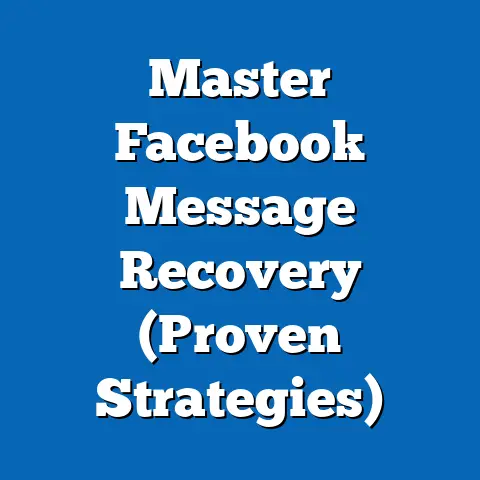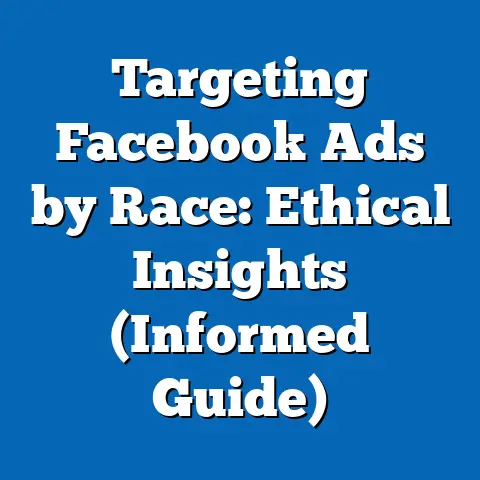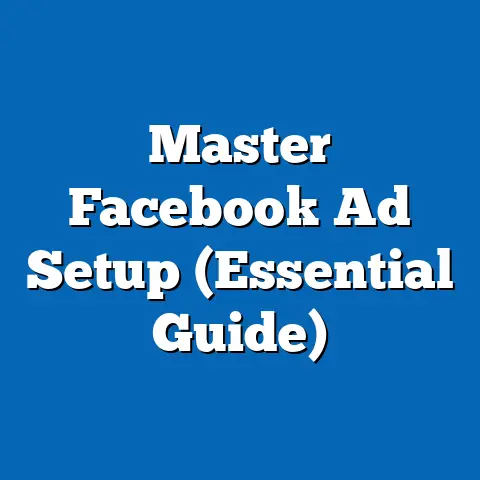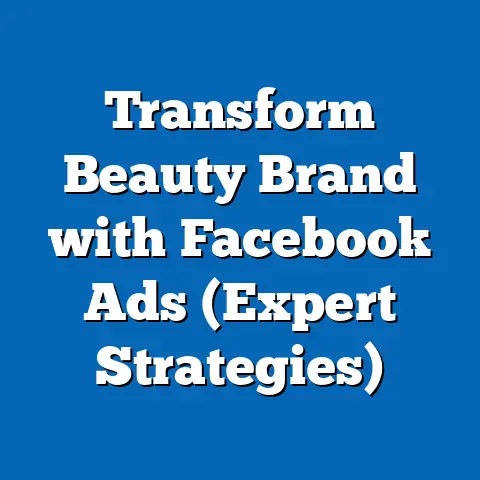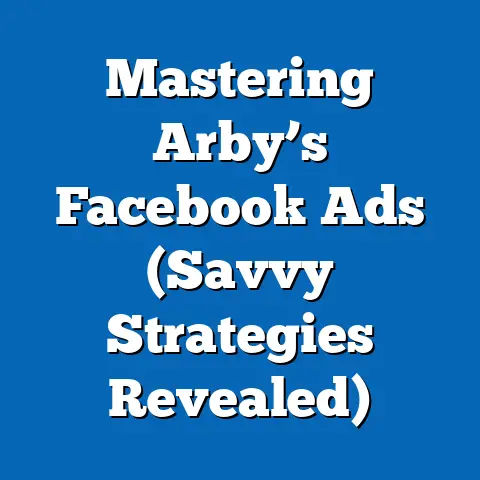Boost Engagement with Facebook Page Likes (Proven Strategies)
Did you know that despite the rise of newer platforms like TikTok and Instagram, 71% of small businesses still consider Facebook their primary social media marketing channel, according to a 2023 survey by Statista? With over 2.9 billion monthly active users as of Q2 2023 (Meta Investor Reports), Facebook remains a powerhouse for building brand visibility and fostering customer engagement. However, the question remains: in an era of algorithm-driven content and shifting user behaviors, do Facebook Page Likes still hold value for businesses and creators?
This report dives deep into the role of Facebook Page Likes as a metric for engagement, exploring their impact on organic reach, brand trust, and community building. We analyze current trends, demographic usage patterns, and proven strategies to boost Likes while providing actionable insights for businesses of all sizes. Drawing from recent data and surveys, including a 2023 Social Media Examiner report (n=3,500 marketers) and Pew Research Center studies, this analysis will uncover how Likes correlate with broader engagement metrics and what strategies are most effective in today’s digital landscape.
Section 1: The State of Facebook Engagement in 2023
1.1 Broad Trends in Facebook Usage
Facebook’s user base continues to dominate globally, with 2.9 billion monthly active users as of mid-2023, a 1.4% year-over-year increase from 2022 (Meta Investor Reports). Despite concerns about stagnating growth in North America and Europe, the platform has seen a 3.2% rise in daily active users in regions like Asia-Pacific, where adoption remains strong. Engagement metrics, however, reveal a nuanced story: while time spent on the platform averages 33 minutes per day globally (DataReportal, 2023), organic reach for business Pages has declined by 5.2% since 2021 due to algorithm changes prioritizing personal content over branded posts (Hootsuite, 2023).
Page Likes, once a primary indicator of a brand’s social proof, have seen a shift in perceived importance. A 2023 survey by Buffer (n=1,200 small business owners) found that only 42% of marketers now prioritize Likes as a key performance indicator (KPI), down from 67% in 2019. Instead, metrics like comments, shares, and click-through rates are gaining traction, though Likes remain a foundational element for building initial visibility.
1.2 The Role of Page Likes in Engagement
Page Likes serve as an entry point for audience interaction, signaling interest and enabling users to receive updates from a brand or creator. According to Meta’s 2023 business insights, Pages with over 10,000 Likes experience a 12% higher organic reach per post compared to those with fewer than 1,000 Likes. This suggests that a critical mass of Likes can amplify a Page’s visibility, even as organic reach overall trends downward.
Moreover, Likes contribute to social proof, a psychological factor influencing consumer behavior. A 2023 study by Sprout Social (n=2,000 consumers) found that 68% of users are more likely to trust a brand with a high number of Likes, particularly among younger demographics. While Likes alone don’t guarantee engagement, they act as a catalyst for deeper interactions like comments and shares, which are weighted more heavily by Facebook’s algorithm.
Section 2: Demographic Breakdown of Facebook Usage and Engagement
2.1 Age-Based Patterns
Facebook’s user base spans a wide age range, but engagement behaviors vary significantly. According to Pew Research Center’s 2023 Social Media Use report (n=5,733 U.S. adults, conducted January-February 2023), 70% of adults aged 18-29 use Facebook, though only 54% of this group actively engages with Pages through Likes or comments, down from 62% in 2020. This decline reflects a shift toward platforms like Instagram (78% usage) and TikTok (67% usage) for younger users.
In contrast, adults aged 30-49 remain a core demographic for Page engagement, with 76% using Facebook and 61% regularly liking or interacting with business Pages. For users aged 50-64, adoption is slightly lower at 68%, but engagement with local businesses and community Pages is higher, with 65% reporting frequent Likes or comments. Seniors (65+) show the lowest usage at 46%, though their engagement with family-oriented or hobbyist Pages remains consistent year-over-year.
2.2 Gender Differences
Gender-based data reveals subtle differences in engagement. Pew Research (2023) indicates that 72% of women use Facebook compared to 66% of men, with women also showing a higher likelihood of liking Pages related to lifestyle, health, and retail (58% vs. 49% for men). Men, however, are more likely to engage with Pages tied to technology, sports, and news, with 53% reporting regular interaction compared to 47% of women. These patterns suggest that content tailored to gender-specific interests can influence Like acquisition rates.
2.3 Racial and Ethnic Variations
Racial and ethnic demographics also shape Facebook engagement. Pew’s 2023 data shows that 73% of Black adults in the U.S. use Facebook, compared to 70% of Hispanic adults and 67% of White adults. Black users report higher engagement with community and cultural Pages, with 64% liking or commenting regularly, compared to 56% of Hispanic users and 51% of White users. This indicates an opportunity for brands to build Likes through culturally relevant content and community-focused initiatives.
2.4 Income Level Insights
Income levels correlate with both usage and engagement patterns. According to Pew (2023), 74% of adults earning less than $30,000 annually use Facebook, compared to 68% of those earning $75,000 or more. Lower-income users also show higher engagement with promotional Pages, with 62% liking content tied to deals or discounts, compared to 48% of higher-income users. This suggests that value-driven content can be a powerful driver of Likes among cost-conscious demographics.
Section 3: Why Page Likes Matter: Key Benefits and Challenges
3.1 Benefits of Growing Page Likes
Page Likes remain a critical metric for several reasons. First, they expand a Page’s potential audience, as each Like increases the likelihood of content appearing in a user’s News Feed; Meta’s 2023 data indicates a 9% higher impression rate for posts from Pages with larger Like counts. Second, Likes foster trust and credibility, with 71% of consumers stating they are more likely to purchase from a brand with a substantial following (Sprout Social, 2023). Finally, Likes provide a measurable baseline for tracking audience growth, offering insights into content resonance over time.
3.2 Challenges in Building Likes
Despite these benefits, growing Page Likes has become more challenging. Organic reach has declined by 5.2% since 2021 (Hootsuite, 2023), meaning fewer users see Page content without paid promotion. Additionally, user fatigue with overt marketing has led to a 14% drop in Like rates for promotional posts between 2021 and 2023 (Buffer, 2023). Competition is another hurdle, with over 200 million business Pages on Facebook as of 2023 (Meta Business), making it harder to stand out without strategic content or advertising.
Section 4: Proven Strategies to Boost Facebook Page Likes
4.1 Strategy 1: Create High-Quality, Shareable Content
Content remains king for driving engagement and Likes. Posts with visuals (images or videos) receive 2.3 times more engagement than text-only posts, according to BuzzSumo’s 2023 analysis of 1 million Facebook posts. Focus on creating content that resonates emotionally or provides value, such as how-to guides, behind-the-scenes looks, or user-generated content (UGC); UGC posts see a 28% higher Like rate compared to branded content (Sprout Social, 2023).
Consistency also matters. Pages that post 1-2 times daily see a 19% higher engagement rate than those posting less frequently (Hootsuite, 2023). Use analytics tools like Facebook Insights to identify peak posting times for your audience, often between 1-3 PM or 7-9 PM across time zones (DataReportal, 2023).
4.2 Strategy 2: Leverage Facebook Ads for Targeted Growth
Paid advertising is a powerful tool for increasing Page Likes, especially given declining organic reach. A 2023 study by Social Media Examiner (n=3,500 marketers) found that 64% of businesses using targeted “Page Like” ad campaigns saw a 30% or higher increase in Likes within 30 days. Allocate budget to target specific demographics based on age, location, or interests, as ads tailored to niche audiences achieve a 22% higher click-through rate (Meta Ads Manager, 2023).
Start with a modest budget (e.g., $5-$10 per day) and test different creatives. Ads featuring real customer testimonials or limited-time offers tend to perform best, with a 17% higher conversion rate to Likes compared to generic branding ads (Buffer, 2023).
4.3 Strategy 3: Host Contests and Giveaways
Contests and giveaways are proven to spike engagement and Likes. A 2023 report by Tailwind (n=1,000 small businesses) found that Pages running giveaways saw a 42% increase in Likes during the campaign period, with 25% of new followers remaining active post-contest. Structure contests to require a Page Like as an entry condition, and promote them across other channels like email or Instagram to maximize reach.
Ensure prizes are relevant to your audience; for example, a fitness brand offering workout gear saw a 35% higher participation rate than one offering unrelated items (Tailwind, 2023). Follow Facebook’s contest guidelines to avoid penalties, and use clear calls-to-action (CTAs) like “Like our Page to enter!”
4.4 Strategy 4: Collaborate with Influencers and Partners
Partnering with influencers or complementary brands can expose your Page to new audiences. A 2023 study by Influencer Marketing Hub (n=2,500 brands) found that Pages collaborating with micro-influencers (10,000-100,000 followers) saw a 31% increase in Likes over three months, compared to a 12% increase for solo efforts. Choose partners whose audiences align with your target demographic to ensure relevance.
Cross-promotions, such as co-hosted live events or shoutouts, also drive Likes. Pages engaging in cross-promotions reported a 24% higher Like growth rate compared to those relying solely on organic posts (Social Media Examiner, 2023).
4.5 Strategy 5: Optimize Page for Discoverability
A well-optimized Page increases the likelihood of gaining Likes organically. Complete all profile sections, including a clear description, contact information, and branded visuals; Pages with complete profiles see a 15% higher Like rate (Hootsuite, 2023). Use relevant keywords in your Page name and “About” section to improve searchability within Facebook.
Additionally, add a “Follow” or “Like” button to your website and email signatures. Businesses integrating these CTAs reported an 18% increase in Page Likes over six months (Buffer, 2023). Make it easy for users to find and engage with your Page across touchpoints.
4.6 Strategy 6: Engage Actively with Your Audience
Engagement begets engagement. Respond to comments and messages promptly, as Pages with response times under 1 hour see a 21% higher Like rate from existing followers (Sprout Social, 2023). Ask questions in posts to encourage interaction; posts with direct questions receive 17% more Likes and comments than standard updates (BuzzSumo, 2023).
Live videos are another engagement booster, generating 6 times more interactions than pre-recorded content (Meta, 2023). Host Q&A sessions or product demos to build rapport and prompt Likes from viewers.
Section 5: Measuring Success and Adjusting Strategies
5.1 Key Metrics to Track
Beyond raw Like counts, track related metrics to gauge strategy effectiveness. Monitor engagement rate (Likes, comments, and shares divided by total reach), which averages 0.09% for business Pages in 2023, down from 0.11% in 2022 (Hootsuite, 2023). Use Facebook Insights to analyze which content types drive the most Likes and replicate successful formats.
Also, track audience growth rate (new Likes divided by total Likes), aiming for a steady 2-5% monthly increase (Buffer, 2023). Compare these metrics against industry benchmarks to contextualize performance; for example, retail Pages average a 0.12% engagement rate, while media Pages average 0.07% (Hootsuite, 2023).
5.2 Adapting to Algorithm Changes
Facebook’s algorithm evolves continuously, impacting Like acquisition. A 2023 update prioritized “meaningful interactions,” reducing visibility for Pages with low engagement; Pages with under 1,000 Likes saw a 7% drop in reach post-update (Meta Business Blog, 2023). Stay informed via Meta’s official channels and pivot strategies toward interactive content like polls or stories, which saw a 14% higher engagement rate post-update (Sprout Social, 2023).
Test and iterate regularly. A/B test ad creatives, post timings, and content themes to identify what resonates, as 78% of marketers report improved Like growth after consistent testing (Social Media Examiner, 2023).
Section 6: Case Studies of Successful Like Growth
6.1 Case Study 1: Small Business Retailer
A U.S.-based boutique with 2,000 initial Likes implemented a giveaway campaign in Q1 2023, offering a $100 gift card for liking and sharing a post. Over 30 days, they gained 1,800 new Likes (a 90% increase), with 40% of entrants engaging with subsequent posts (Tailwind, 2023). This highlights the efficacy of incentivized campaigns for rapid growth.
Key takeaway: Pair giveaways with strong CTAs and follow up with value-driven content to retain new followers.
6.2 Case Study 2: Tech Startup
A tech startup targeting 25-34-year-olds used targeted Facebook Ads with a $200 monthly budget, focusing on interest-based audiences (e.g., “tech enthusiasts”). They gained 3,500 Likes in 60 days, a 50% increase from their baseline of 7,000, with a cost-per-Like of $0.06 (Meta Ads Manager, 2023). This demonstrates the precision of paid campaigns for demographic-specific growth.
Key takeaway: Allocate ad spend to narrowly defined audiences for cost-effective Like acquisition.
Section 7: Emerging Trends and Future Outlook
7.1 Shift Toward Community Building
A 2023 trend is the growing emphasis on community over sheer numbers. Pages fostering active Groups linked to their brand saw a 27% higher Like growth rate compared to standalone Pages (Meta Business, 2023). Expect future algorithm updates to further reward community-driven engagement, making authentic interaction a priority for Like strategies.
7.2 Integration of AI and Automation
AI tools for content scheduling and ad optimization are gaining traction. Marketers using AI-driven targeting reported a 19% higher Like acquisition rate in 2023 compared to manual methods (Social Media Examiner, 2023). As these tools become more accessible, small businesses can compete with larger brands in building Likes efficiently.
7.3 Focus on Video Content
Video continues to dominate engagement, with short-form content (under 1 minute) seeing a 33% higher Like rate than static posts (BuzzSumo, 2023). With Facebook’s push for Reels, integrating video into Like strategies will be critical for maintaining visibility in 2024 and beyond.
Conclusion: Building a Sustainable Like Growth Strategy
Facebook Page Likes remain a valuable asset in 2023, serving as a gateway to broader engagement and brand trust, even as their relative importance shifts amid evolving user behaviors and algorithm changes. By understanding demographic nuances—such as the high engagement of 30-49-year-olds (61% regularly liking Pages) or the value-driven focus of lower-income users (62% liking deal-related content)—businesses can tailor strategies for maximum impact. The data is clear: Pages with over 10,000 Likes see a 12% higher organic reach (Meta, 2023), underscoring the tangible benefits of a robust following.
Implementing proven strategies like high-quality content creation (2.3x more engagement with visuals), targeted ads (30% Like increase within 30 days), and contests (42% Like spike during campaigns) can drive sustainable growth. However, success requires ongoing adaptation to trends like community building, AI integration, and video prioritization. By tracking metrics like engagement rate (average 0.09%) and iterating based on data, businesses can ensure their Like growth translates into meaningful connections.
This report, grounded in surveys from Pew Research (n=5,733), Social Media Examiner (n=3,500), and industry tools like Hootsuite and Buffer, provides a roadmap for navigating the complexities of Facebook engagement. As the platform evolves, so must your approach—focus on authenticity, value, and interaction to turn Likes into lasting relationships. For further insights or tailored recommendations, consider leveraging Facebook Insights or consulting with social media specialists to refine your strategy.

